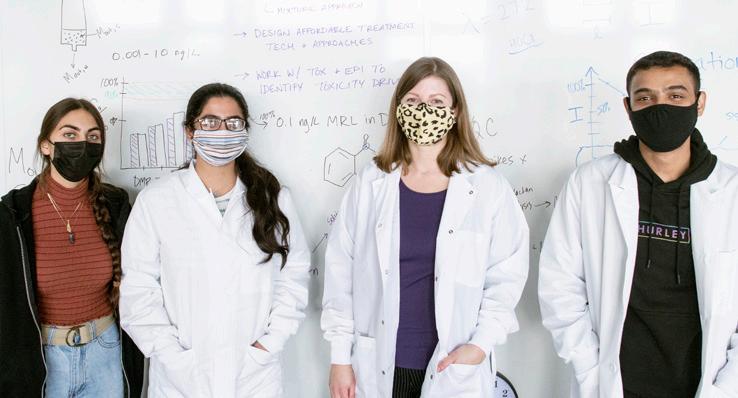
2 minute read
New Lab Closes the Loop on Water Sustainability
New Lab Closes Loop on Water Sustainability
The water that pours out from your kitchen faucet goes through a lot to make it to your home. Assistant Professor Kirin Emlet Furst wants to use her new high-tech Water Systems Chemistry Lab at the Potomac Science Center to close the loop on water and increase the efficiency of those processes by taking a systems approach.
Furst, a faculty member in the Sid and Reva Dewberry Department of Civil, Environmental, and Infrastructure Engineering, believes a systems approach is the best way to solve the world’s safe water problems. “Our research lab is primarily focused on removing organic contaminants in drinking water systems and portable reuse systems,” says Furst. The water treatment process has many steps: source water protection, water treatment, the distribution of the water, and what people are actually exposed to in their homes. “A lot of researchers and research labs focus on one of these processes, but we have projects that touch each part of the water system,” Furst says.
Furst’s main research interest is in reducing disinfection byproducts caused by reactions between dissolved organic materials and water disinfectants. The disinfectants used in water are essential to preventing water-borne pathogens, but when they react with materials that remain in the water, they can create toxins that have numerous health effects.
“To solve the disinfection byproducts problem, we have to look at the bigger picture. It’s hard to test their effects, and there are dozens of opportunities for these toxins to be introduced, so we can’t look at one stage in the process,” she says. Furst and the graduate and undergraduate students in her lab are also working on ways to increase affordable water treatment methods for low-income areas and increase the treatment and reuse of wastewater. In addition, some of her graduate students are looking into creating new types of filters, others at reducing phthalates.
The advanced equipment in her lab gives her and her students the ability to tackle numerous parts of the water treatment systems, says Furst. And she is looking forward to the new and innovative projects her undergraduate and graduate students will take on. g






